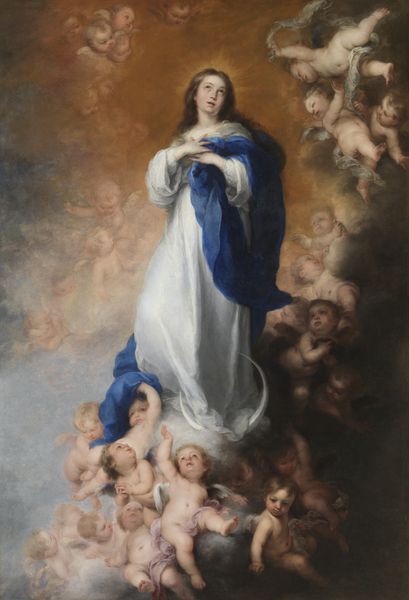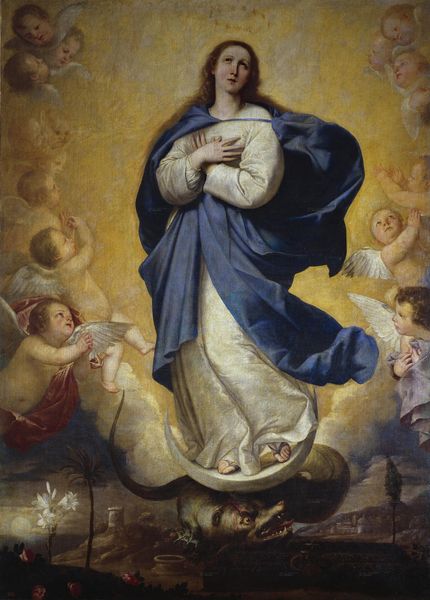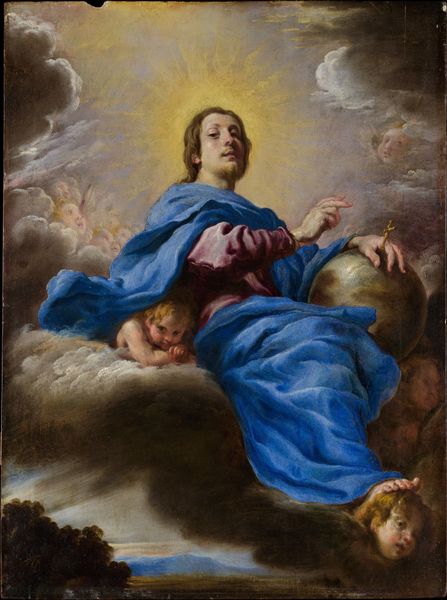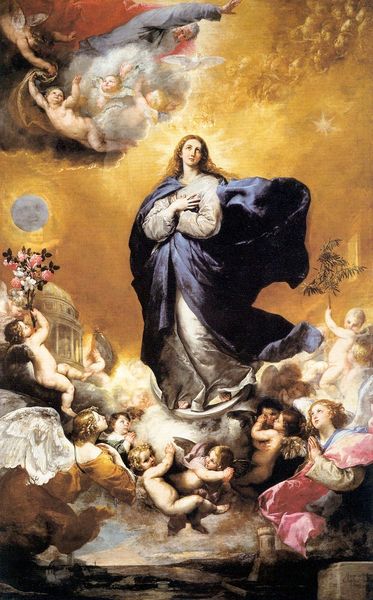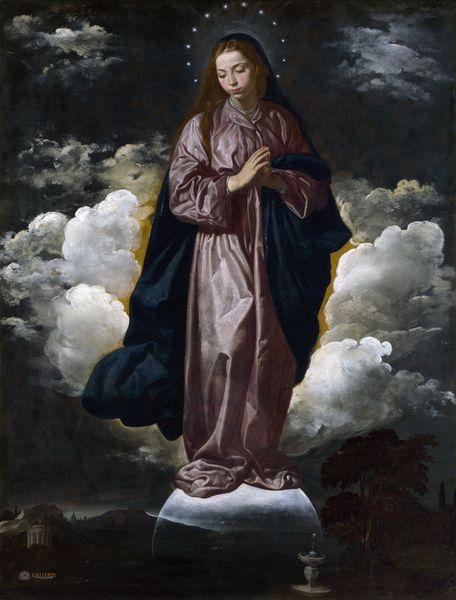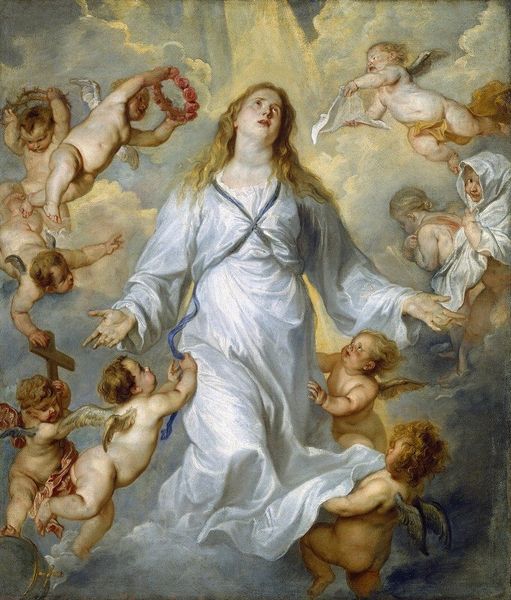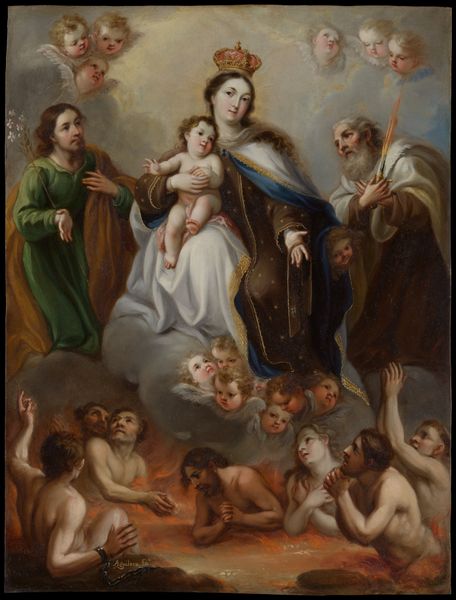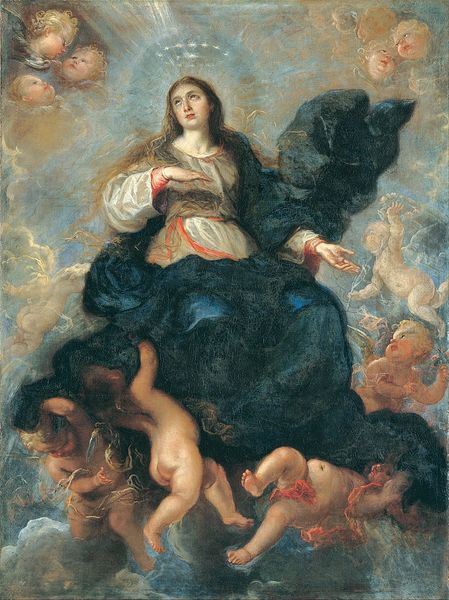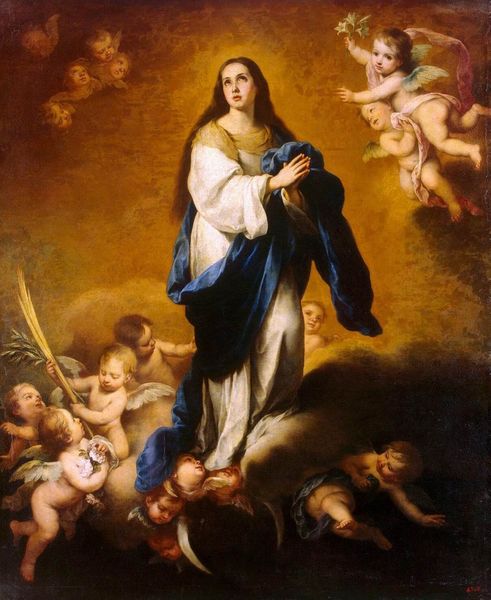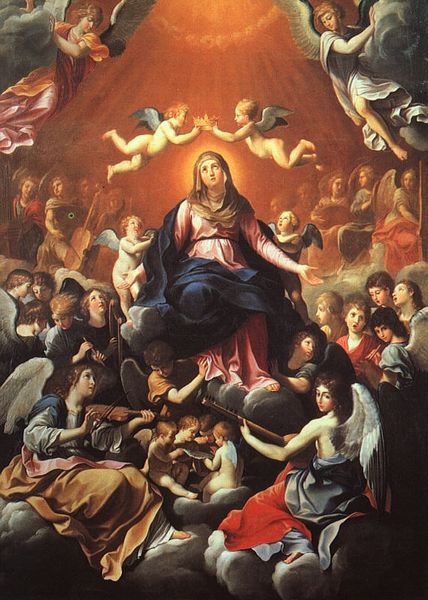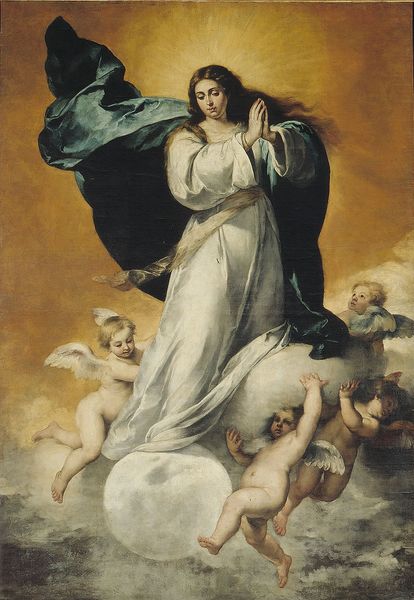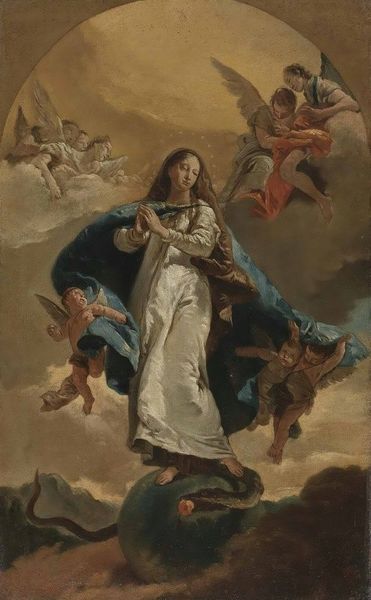
painting, oil-paint
#
allegory
#
baroque
#
painting
#
oil-paint
#
figuration
#
mythology
#
history-painting
#
academic-art
Dimensions: 208 x 145 cm
Copyright: Public domain
Editor: Claudio Coello’s "The Immaculate Conception," created around 1676, is striking in its swirling composition and sense of ethereal light. I am curious, what symbols or cultural meanings resonate most strongly for you in this piece? Curator: This image is saturated with culturally inherited symbols. Note the stars, arranged as a crown, echoing celestial purity. Her clasped hands evoke humility and acceptance, reflecting a specific theological understanding of the Virgin Mary. Editor: I see the stars and the gesture, but what about the cherubs? What’s their symbolic purpose here? Curator: They form a divine court, framing her as the Queen of Heaven. But look closer – notice the individual emotions in their faces. Some are joyous, others reverent. It personalizes the divine narrative. What feelings do their expressions evoke in you? Editor: I hadn't focused on their expressions as much as their general busyness. I guess I see a bit of both, joy and reverence. But why this specific iconography? Why not something different to express purity and divinity? Curator: Ah, now we touch upon cultural memory. The Immaculate Conception, as a theological idea, was intensely debated. Coello's image, with its established symbols, reinforces a particular doctrinal viewpoint, imbuing it with emotional weight through visual cues familiar to the viewer. This type of iconic representation served as a powerful visual argument. Editor: So, the artwork isn’t just beautiful; it’s actively participating in a conversation, a long conversation through history. I guess I’ll never look at cherubs the same way again! Curator: Indeed. Visual symbols speak volumes when we learn how to listen. There is so much history embedded in a single image, waiting to be deciphered.
Comments
No comments
Be the first to comment and join the conversation on the ultimate creative platform.
